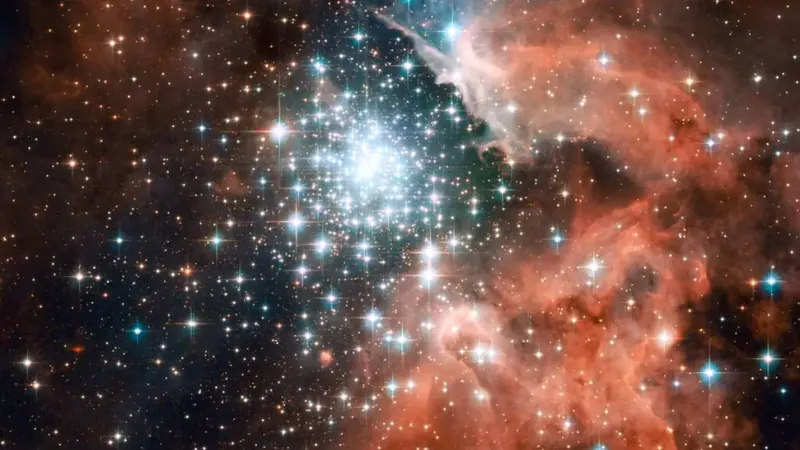
Astronomers Uncover One of the Heaviest Binary Star Systems: The Cosmic Giants of NGC 3603
2025-09-01
Author: Arjun
A Groundbreaking Discovery in Stellar Science
In a remarkable cosmic revelation, astronomers have identified one of the heaviest pairs of stars in the universe, designated NGC 3603-A1. Spearheaded by Dr. Phil Massey from Lowell Observatory, this research team has leveraged both Hubble Telescope data and fresh observations to unveil the intricacies of this massive binary star system, with their findings set to be detailed in the prestigious *Astrophysical Journal*.
Journey into the Heart of NGC 3603
Nestled 25,000 light-years away in the dazzling star-forming region of NGC 3603, the NGC 3603-A1 system is home to two titanic stars engaged in a rapid orbital dance. Orbiting each other approximately every four days, they revolve around one another nearly 100 times in the span it takes our Earth to complete a single journey around the Sun.
The first star boasts a staggering mass of about 93 times that of our Sun, while its companion weighs in at around 70 solar masses. This makes them some of the heftiest binary stars ever directly measured within our Milky Way.
The Mystique of Cosmic Titans
What truly sets NGC 3603-A1 apart is not merely its size but its extraordinary luminosity and energy output. Emitting powerful winds and intense radiation, these stellar giants resemble Wolf-Rayet stars, which are typically older and nearing the end of their lifecycle. Yet, intriguingly, these stars are relatively young, revealing how extreme cosmic conditions can misrepresent a star's evolutionary stage.
A Clue From a Young Scientist
The genesis of this groundbreaking discovery can be traced back to a sharp observation by Sarah Bodansky, then an undergraduate at Carleton College, during her summer stint in 2020. Analyzing archival Hubble data remotely from Lowell Observatory, she discerned a crucial detail: the stars’ spectral features doubled as they swung toward and away from Earth, a clear indication of their binary nature.
Unraveling the Cosmic Dance
Following this insight, the research team meticulously examined both new and archived Hubble observations to ascertain the stars' sizes, temperatures, and interactions. They discovered that the smaller star has been siphoning mass from its larger counterpart, which accelerates its spin. This mass transfer hints at the evolutionary pathways of massive stars and their eventual fates, which often culminate in spectacular supernovae or the formation of black holes.
The Legacy of NGC 3603-A1 in Cosmic Evolution
The NGC 3603-A1 system is critically significant in the grand narrative of cosmic evolution, as massive binary stars like these are believed to be the progenitors of binary black holes. Upon their demise, these stellar giants can give birth to pairs of black holes that may eventually collide, resulting in gravitational waves—ripples in the fabric of space-time first detected in 2015. By studying extraordinary systems like NGC 3603-A1, scientists sharpen their understanding of these immense cosmic phenomena.




 Brasil (PT)
Brasil (PT)
 Canada (EN)
Canada (EN)
 Chile (ES)
Chile (ES)
 Česko (CS)
Česko (CS)
 대한민국 (KO)
대한민국 (KO)
 España (ES)
España (ES)
 France (FR)
France (FR)
 Hong Kong (EN)
Hong Kong (EN)
 Italia (IT)
Italia (IT)
 日本 (JA)
日本 (JA)
 Magyarország (HU)
Magyarország (HU)
 Norge (NO)
Norge (NO)
 Polska (PL)
Polska (PL)
 Schweiz (DE)
Schweiz (DE)
 Singapore (EN)
Singapore (EN)
 Sverige (SV)
Sverige (SV)
 Suomi (FI)
Suomi (FI)
 Türkiye (TR)
Türkiye (TR)
 الإمارات العربية المتحدة (AR)
الإمارات العربية المتحدة (AR)